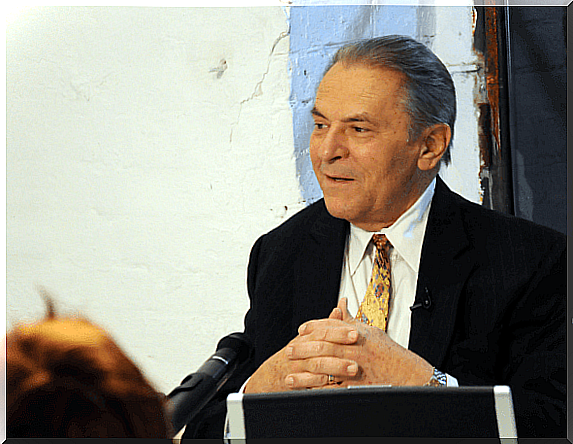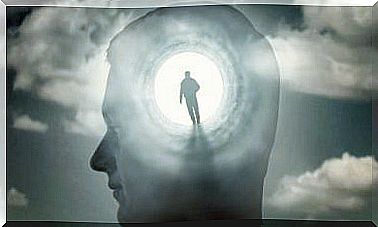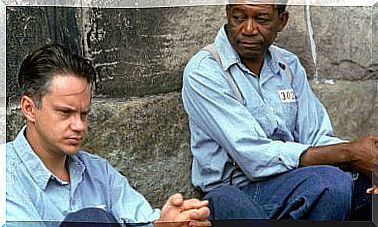Stanislav Grof, Life And Work

One of the most influential people in psychology today is Stanislav Grof. His name has found a place in this science thanks to his research on altered states of consciousness and holotropic breathing. In addition, he is one of the creators of the most recent force of psychology, transpersonal psychology.
Stanislav Grof was born on July 1, 1931 in Prague, studied medicine and specialized in psychiatry. In addition, he was training in Freudian analysis for more than 7 years. His experience is unmatched, since he has been dedicated to clinical and research for more than 50 years. Incredible true?
In this article, we will talk about Grof’s life and work. We will explore the world of the researcher who studied the mind through psychedelic substances and we will take a tour of his main contributions to the world of psychology.
Transpersonal Psychology and Stanislav Grof
In 1969, the term transpersonal psychology was coined, and it was Grof who promoted it along with other authors. Grof developed these issues with: Jamer Fadiman Miles Vich, Sonya Marguiles and Anthony Sutich. In addition, he worked hand in hand with Abraham Maslow and Ken Wilber. And in 1978, Grof founded the International Association for Transpersonal Psychology.
Grof emphasizes that the other forces in psychology place little emphasis on spirituality. Moved by this belief, he began to approach different practices that he believed could be integrated into the study of the human mind and conducted research with patients in these areas. Thus, he rescued spirituality as a legitimate aspect of our psyche.
Thanks to his clinical practice, his research in transpersonal psychology and the contributions of other creators, we currently have a psychology that has a broader vision and that encompasses various approaches and theories.

Stanislav Grof and psychedelics
Stanislav Grof volunteered in a study at the Prague Medical School where he had his first experience with LSD. After his experience, he became interested in the investigation of this type of substances and the effects that they could produce in our brain. Together with a group of researchers, he began studying psilocybin, LSD and mescaline in a group of 40 people.
During the process, they performed various psychotechnical tests and biological tests. The purpose of this activity was to investigate whether each of the substances produced specific effects or if together they produced similar states. Furthermore, in Grof’s words, getting to see if there was an “experimental psychosis” would be of great help in solving the enigma of psychosis.
For 20 years, Grof worked in the laboratory conducting psychedelic psychotherapy in Prague and the United States. But after the prohibition of these investigations for, among other things, what could lead to the use of these substances in the chromosomes, he moved to the Ealen Institute, where he wrote his first book.
Holotropic respiration
After moving in, he also developed, with Christina Grof, the holotropic breathing technique. This non-pharmacological technique produces states similar to those produced by psychedelic substances.
If we go to etymology, the term holotropic comes from the Greek holos, which means totality, and trepein, which means to go forward. That is, holotropic would mean the path to totality or moving towards it. It is, therefore, a way of self-exploration in which one works with the conscience and that integrates various wisdoms from spiritual traditions.
This transpersonal psychotherapeutic technique classifies symptoms, blocks or problems as the product of forgotten or repressed content that can be accessed through expanded states of consciousness or holotropic states.
Now, the issues that are addressed during a holotropic breathing session have to do with different states of consciousness, which includes areas such as the perinatal and the ancestral.

Works by Stanislav Grof
As explained on the page dedicated to Grof, among his publications, there are more than 160 articles in professional magazines and books. Therefore, we have decided to select those that, from our point of view, may be of the greatest interest:
- The Stormy Search for Self: A Guide to Personal Growth Through Spiritual Emergence. It is a personal development guide. In this book, he describes states that are considered psychotic in some cultures. And make some suggestions for those who experience this type of sensation. Thus, it shows how these complex states of mind can be beneficial.
- The holotropic mind. In this work, Grof makes a description of various experiences with this type of transpersonal psychotherapy technique. At the same time, it shows the integration of past experiences, mystical experiences, and the relationship between death and rebirth.
- LSD psychotherapy: the healing potential of psychedelic medicine. Perhaps this is the work that has earned Grof the most recognition. It contains a comprehensive guide on the use of LSD in the psychotherapeutic field.
- When the impossible happens: adventures in non-ordinary realities. It is a psychonautical autobiography of Grof. Thanks to it, the author’s inner world can be accessed through the cases and experiences he narrates throughout his professional career.
- Transpersonal psychology: birth, death and transcendence in psychotherapy. In this text, Grof expresses the foundations of the fourth force of psychology. In addition, it discusses the therapeutic models of different schools of psychology and psychiatry. And it rescues the contributions that transpersonal psychology makes.
Stanislav Grof is currently Professor of Psychology at the California Institute for Comprehensive Studies (CIIS) in San Francisco. In April 2016 he married Briggitte Grof, his traveling companion. Both travel the world organizing holotropic breathing seminars and workshops in order to publicize and make this technique more accessible. In short, Stanislav Grof is one of the living authors who has most revolutionized the world of psychology in recent decades.









